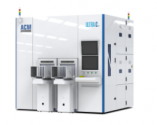ACM Semiconductor Equipment (Shanghai) Co., Ltd. (hereinafter referred to as "ACM Shanghai"), a leading supplier of wafer process solutions for semiconductor front-end and advanced wafer-level packaging applications, today launched a wafer-on-frame cleaning system for advanced packaging. The equipment can effectively clean semiconductor wafers during the post-debonding cleaning process.
The innovative solvent recovery system of the framed wafer cleaning equipment has significant environmental and cost benefits. This function can achieve nearly 100% solvent recovery and filtration, thereby reducing the amount of chemicals used in the production process. ACM Shanghai has completed the installation and verification of the first cooperative equipment with a Chinese integrated circuit manufacturer.
Dr. Hui Wang, Chairman of ACM Shanghai, said: "ACM Shanghai has successfully promoted the continued development of advanced packaging with its rich industry experience and customer relationships. We believe that as the semiconductor industry shifts to advanced packaging and back-end 3D integrated design, our wafer-on-frame cleaning equipment will further attract various customer groups. We are committed to sustainable development and provide customers with equipment that recycles solvents, thereby reducing waste and lowering the total cost of ownership in the production process."
 About Frame Wafer Cleaning Equipment
About Frame Wafer Cleaning Equipment
The framed wafer cleaning equipment is equipped with four chambers, and provides a variety of configurations through options such as high-purity solvents, MegPie solvents, deionized water, nano solvents and isopropyl alcohol (IPA) nozzles, which can be connected to adapt to various processes. The equipment can also complete the cleaning and drying processes in the same chamber at the same time to achieve efficient cleaning and drying; it is available in 8-inch and 12-inch configurations, suitable for standard wafers and framed wafers.
In addition, the equipment can seamlessly process standard wafers and framed wafers, and the configuration of the chamber and loading port can process two types of wafers at the same time, ensuring flexible and efficient operation capabilities. ACM Shanghai's self-developed processing technology enables the equipment to process thin wafers with a thickness of less than 150 microns. ACM's Smart Megasonix® technology (patent number: ZL200910050834.2) is used in the cleaning process to perform comprehensive and damage-free cleaning of the entire wafer. The equipment can efficiently remove photoresist, especially residues on the edges, to ensure that the surface of the wafer is smooth and residue-free after cleaning.
Technical advantages:
- Specially designed vacuum chucks reduce the possibility of damage to the back of the wafer, setting a new standard for precision under extreme cleaning conditions;
- Adopts a patented fixing method (patent application number: 202310787637.9) by ACM Shanghai to ensure excellent stability when handling framed wafers during high-speed rotation;
- With excellent anti-static performance, ion rods are used in the equipment front-end module (EFEM) and each chamber module, supplemented by a DI-CO2 mixer to protect the wafer from static electricity during the entire process.

